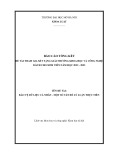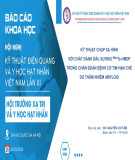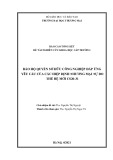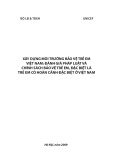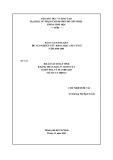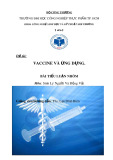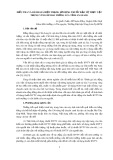
Blackhouse et al. Cost Effectiveness and Resource Allocation 2010, 8:14
http://www.resource-allocation.com/content/8/1/14
Open Access
RESEARCH
© 2010 Blackhouse et al; licensee BioMed Central Ltd. This is an Open Access article distributed under the terms of the Creative Com-
mons Attribution License (http://creativecommons.org/licenses/by/2.0), which permits unrestricted use, distribution, and reproduc-
tion in any medium, provided the original work is properly cited.
Research
Cost-utility of Intravenous Immunoglobulin (IVIG)
compared with corticosteroids for the treatment of
Chronic Inflammatory Demyelinating
Polyneuropathy (CIDP) in Canada
Gord Blackhouse*
1,2
, Kathryn Gaebel
1,3
, Feng Xie
1,2,3
, Kaitryn Campbell
1,2
, Nazila Assasi
1,2
, Jean-Eric Tarride
1,2,3
,
Daria O'Reilly
1,2,3
, Colin Chalk
4
, Mitchell Levine
2,3
and Ron Goeree
1,2,3
Abstract
Objectives: Intravenous immunoglobulin (IVIG) has demonstrated improvement in chronic inflammatory
demyelinating polyneuropathy (CIDP) patients in placebo controlled trials. However, IVIG is also much more expensive
than alternative treatments such as corticosteroids. The objective of the paper is to evaluate, from a Canadian
perspective, the cost-effectiveness of IVIG compared to corticosteroid treatment of CIDP.
Methods: A markov model was used to evaluate the costs and QALYs for IVIG and corticosteroids over 5 years of
treatment for CIDP. Patients initially responding to IVIG could remain a responder or relapse every 12 week model cycle.
Non-responding IVIG patients were assumed to be switched to corticosteroids. Patients on corticosteroids were at risk
of a number of adverse events (fracture, diabetes, glaucoma, cataract, serious infection) in each cycle.
Results: Over the 5 year time horizon, the model estimated the incremental costs and QALYs of IVIG treatment
compared to corticosteroid treatment to be $124,065 and 0.177 respectively. The incremental cost per QALY gained of
IVIG was estimated to be $687,287. The cost per QALY of IVIG was sensitive to the assumptions regarding frequency
and dosing of maintenance IVIG.
Conclusions: Based on common willingness to pay thresholds, IVIG would not be perceived as a cost effective
treatment for CIDP.
Introduction
Chronic inflammatory demyelinating polyneuropathy
(CIDP) is an acquired immune-mediated inflammatory
disorder that targets the myelin sheaths that wrap the
nerves of the peripheral nervous system. The motor
weakness symptoms of CIDP resemble those of Guillain-
Barre syndrome (GBS), and CIDP is sometimes consid-
ered to be a chronic counterpart of GBS[1]. The course of
CIDP may be chronic progressive, stepwise, or monopha-
sic. CIDP can occur at all ages and in both sexes, but is
more common in older individuals and males. It is
believed that the older age group is more likely to have a
chronic progressive course of CIDP, and in younger
patients, a relapse remitting course[2]. The prevalence
rate of CIDP has been reported to be between 1.0 to 1.9
per 100,000 population[3,4].
CIDP has both motor and sensory symptoms, with
motor being the predominant feature. There is symmetri-
cal involvement of both arms and legs, including both
proximal and distal muscles, resulting in global muscle
weakness and a general reduction or absence of deep ten-
don reflexes[2]. Occasionally, muscle weakness becomes
profound, and patients are unable to walk[5]. A preva-
lence study conducted by Lunn and colleagues[3]
reported that 54% of patients had been severely disabled
at some point in the past, and 13% were still severely dis-
abled at the time of the prevalence assessment.
Patients with CIDP show improvement after treatment
with corticosteroids and Plasma Exchange (PE),[6,7] but
* Correspondence: blackhou@mcmaster.ca
1 PATH Research Institute, McMaster University, Hamilton, Ontario, Canada
Full list of author information is available at the end of the article





